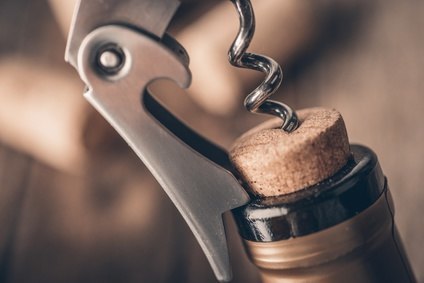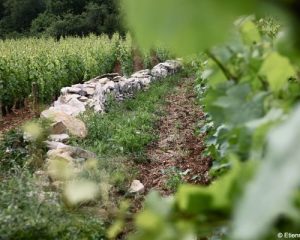
There is no shortage of recommendations and tips for storing wine at home, from cellar to fridge. But what do you do when the bottle is already open? iDealwine offers you some suggestions for your next partly drunk bottle.
You will certainly have found yourself in a situation where you refrain from opening a bottle if you are only intending to sample a couple of glasses, in case the remaining contents deteriorate over the next few days. This self-restraint is unfortunate, and actually at odds with the idea of moderation as it means that every bottle opened must be polished off.
Let’s take a look at the chemistry involved. It is well known that oxygen is beneficial to wine in small quantities. We are often advised to open wine a few minutes or even a few hours before drinking so that oxygen aerates the wine and brings out a multiplicity of flavours. However, rather like love, that first flush fades with time. In the case of wine, prolonged contact with air can have a disastrous effect on its balance. So how can you ensure that an open bottle of wine loses none of its fine savour?
Firstly, if you know in advance that you will not finish the bottle, then take care. Do not expose the wine to air once you have poured out the required amount. Seal the bottle and place it in the fridge if it is a white wine, or even a light red from the Loire or Beaujolais. Remember to take it out 2 or 3 hours before drinking so that it reaches room temperature (unless that happens to be 35 degrees, in which case avoid taking it out too early). The bottle can be sealed with the original cork, but do not reverse the cork as it may be dirty on the outside and affect the taste of the wine. It is preferable to use plastic corks specially designed for this purpose as they have the advantage of creating a more airtight seal. If you use this method, a red wine will keep for 3 to 5 days.
As a general rule, avoid exposing your bottle to light, especially sunlight – and this applies to storage in general, even when the bottle has not been opened. Furthermore, do not forget to keep your opened bottle upright. Horizontal storage maximises the surface area in contact with air and therefore increases the risk of an unpleasant surprise a couple of days later.
Now let’s move beyond useful basic tips to more practical solutions. One option is to decant the remaining wine into a smaller container and then seal it, thus significantly reducing the surface area in contact with air. This option is very effective and relatively cheap. The only disadvantage is the lack of flexibility, unless you have a supply of different-sized bottles to suit every quantity. Whatever the case may be, don’t forget to use a funnel to avoid spilling wine everywhere.
Vacuum systems are known to be effective. The air which has already entered the bottle can be extracted using a little pump and a cork fitted with a valve. But beware: not all the air can be extracted. The lower the level in the bottle, the less effective the process.
The final option is a neutral gas injection system. The Coravin system, for example, extracts the wine using a fine needle which pierces the cork. An inert gas is then injected into the bottle to form a protective layer just above the liquid and prevent it from coming into contact with oxygen. This system is ideal for restaurateurs, but is quite expensive for personal use. That said, there are clear signs that technological advances mean that the future of wine storage is rosy.
Here are a few conclusions to round off. White wine can be stored in the fridge and will keep a few days longer than red wine. Furthermore, a wine with no added sulphur, whatever the method, will be more unstable by definition and so it should not be stored once open for more than a day. Lastly, do not even think about putting a silver teaspoon in the neck of a bottle of Champagne to preserve its fizz. This myth was so widespread that the CIVC (Champagne professional association) brought together a group of experts who officially demonstrated that it is not effective.
See all wines currently on sale
Other things to read on the iDealwine blog:



